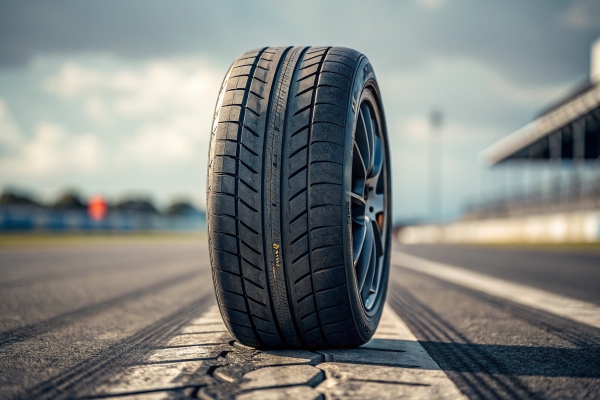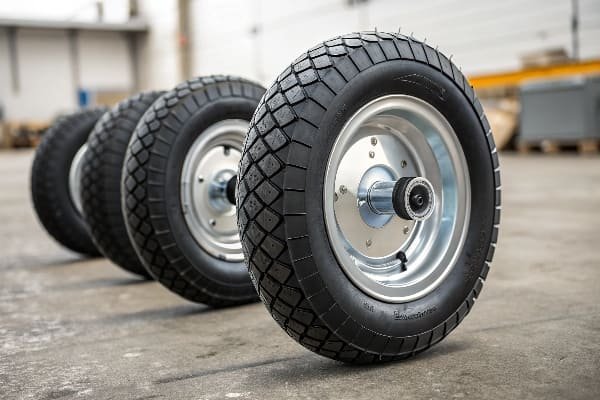Have you ever wondered what type of synthetic rubber is used in tires? Synthetic rubbers play a crucial role in tire manufacturing, providing specific properties that enhance the performance, durability, and safety of tires.
The most commonly used synthetic rubbers in tire production are Styrene-Butadiene Rubber (SBR) and Butadiene Rubber (BR). These rubbers are used in combination with natural rubber to create a balanced blend that optimizes the tire’s performance in various conditions.

Let’s explore why SBR and BR are the go-to choices for tire manufacturing and how they contribute to the overall performance of tires.
What Is Another Name for Synthetic Rubber?
Synthetic rubber is sometimes referred to by its specific types or brand names.
Some common names for synthetic rubber include Styrene-Butadiene Rubber (SBR), Butadiene Rubber (BR), Nitrile Rubber (NBR), and EPDM (Ethylene Propylene Diene Monomer). These are the most commonly used types of synthetic rubber in various industries, including tire manufacturing.
Common Synthetic Rubber Names
| Synthetic Rubber Type | Common Name(s) |
|---|---|
| Styrene-Butadiene (SBR) | Buna-S |
| Butadiene Rubber (BR)1 | Polybutadiene |
| Nitrile Rubber (NBR) | Buna-N |
| EPDM | Ethylene Propylene Rubber |
These names refer to different types of synthetic rubber2 that are used based on their specific properties.
What Is the Most Common Synthetic Rubber?
The most commonly used synthetic rubber in tire manufacturing is Styrene-Butadiene Rubber (SBR)3.
SBR is widely used due to its good balance of performance and cost, offering high wear resistance and good durability for general-purpose tires.
Why SBR is Common
| Feature | SBR Rubber ✅ |
|---|---|
| Cost | Low |
| Wear Resistance | Excellent |
| Applications | Tires, seals, gaskets |
SBR is the preferred choice for most tire manufacturing due to its overall performance, cost-efficiency, and availability.
Why Is Synthetic Rubber Used in Tires?
Synthetic rubber is used in tires to improve various performance aspects that are essential for safe driving.
While natural rubber offers excellent elasticity and resilience, synthetic rubber types like SBR and BR are specifically engineered to provide enhanced durability, wear resistance, and better performance under extreme temperatures. Synthetic rubbers also offer advantages in terms of cost-efficiency and availability.
Benefits of Using Synthetic Rubber in Tires
| Property | Synthetic Rubber (SBR, BR) ✅ | Natural Rubber (NR) ✅ |
|---|---|---|
| Durability | Excellent | Good |
| Wear Resistance | High | Moderate |
| Temperature Resistance | Excellent (especially SBR) | Moderate |
| Cost | Lower | Higher |
| Elasticity | Good | Excellent |
Synthetics like SBR and BR enhance the tire’s performance, providing a balance between cost and functionality.
What Is Styrene-Butadiene Rubber (SBR)?
Styrene-Butadiene Rubber (SBR) is one of the most widely used synthetic rubbers in tire manufacturing.
SBR is a copolymer made from the polymerization of styrene and butadiene. It is valued in tire production for its excellent wear resistance, good aging stability, and affordability. SBR is typically used in the tread and sidewalls of tires, where durability and traction are most important.

Benefits of SBR in Tire Manufacturing
| Feature | Styrene-Butadiene Rubber (SBR) ✅ |
|---|---|
| Wear Resistance | Excellent |
| Cost | Low |
| Temperature Resistance | Good |
| Durability | High |
| Applications | Tread, sidewalls, general-purpose tires |
SBR is favored in tire manufacturing due to its ability to provide a good balance of performance and cost, making it ideal for standard vehicle tires.
What Is Butadiene Rubber (BR)?
Butadiene Rubber (BR) is another synthetic rubber commonly used in tire manufacturing, especially in the tread area.
BR is made from the polymerization of 1,3-butadiene and is known for its high elasticity and excellent wear resistance. It is often used in combination with SBR in tire treads to improve grip, reduce rolling resistance, and enhance the tire’s overall performance on wet surfaces.
Benefits of BR in Tire Manufacturing
| Feature | Butadiene Rubber (BR) ✅ |
|---|---|
| Elasticity | High |
| Wear Resistance | Excellent |
| Traction | Good (especially in wet conditions) |
| Durability | High |
| Applications | Tire tread, high-performance tires |
BR is commonly used in high-performance tires due to its ability to provide superior traction and flexibility under different driving conditions.
Why Are Both SBR and BR Used Together in Tires?
The combination of SBR and BR in tire manufacturing offers the best of both worlds.
SBR provides wear resistance and cost-effectiveness, while BR enhances elasticity and traction, particularly in wet conditions. Together, these two synthetic rubbers create a tire that offers a balance of durability, flexibility, and performance, making them suitable for a wide range of vehicles and driving conditions.
SBR + BR in Tire Performance
| Rubber Type | Benefit |
|---|---|
| SBR (Styrene-Butadiene) | Wear resistance, affordability |
| BR (Butadiene Rubber) | Elasticity, traction, performance |
By combining SBR and BR, tire manufacturers can optimize tire performance, ensuring they provide a long service life, excellent grip, and resistance to wear.
What Are the Advantages of Using Synthetic Rubber in Tires?
The main advantage of mixing synthetic rubber in tire production is the combination of strength and flexibility.
By mixing rubber with plastic, manufacturers can create a product that is more versatile, easier to process, and more cost-effective. The blend can be tailored to suit specific performance requirements, such as better chemical resistance, lower weight, or increased toughness.
Key Benefits of Synthetic Rubber in Tires
| Benefit | Synthetic Rubber (SBR, BR) ✅ |
|---|---|
| Cost Efficiency | Lower cost compared to natural rubber |
| Performance | Improved wear resistance and heat tolerance |
| Customization | Can be tailored for specific performance needs |
| Availability | More abundant and easier to source |
Synthetic rubber’s ability to be tailored for specific requirements makes it ideal for modern tire manufacturing.
Are Most Tires Synthetic Rubber?
Yes, most modern tires use a combination of synthetic rubber and natural rubber.
While natural rubber still plays a significant role in tire production, synthetic rubbers like SBR and BR have become the dominant choice due to their ability to meet the performance demands of modern tires.
What Percentage of Tires Are Synthetic Rubber?
A significant portion of modern tires is made from synthetic rubber.
Approximately 60% to 70% of the rubber used in tires is synthetic, with the remainder being natural rubber. This blend provides a balance of cost, performance, and durability.
Rubber Composition in Tires
| Material | Percentage in Tires |
|---|---|
| Synthetic Rubber (SBR, BR) | 60%-70% |
| Natural Rubber (NR) | 30%-40% |
Synthetic rubber dominates the tire industry, ensuring optimal performance in a wide range of conditions.
Conclusion
Synthetic rubbers like Styrene-Butadiene Rubber (SBR) and Butadiene Rubber (BR) are essential components in modern tire manufacturing. While natural rubber still plays a key role, synthetic rubbers are used in larger quantities due to their superior performance in areas like wear resistance, cost efficiency, and adaptability. Together, they ensure that tires meet the high-performance standards required in today’s automotive industry.
🚀 Need High-Performance Rubber Products for Your Tires?
Contact Julong Rubber today or Request a Custom Quote for synthetic rubber solutions tailored to your tire needs!
-
Learn how BR contributes to tire traction and flexibility, making it essential for high-performance tires. ↩
-
Discover the benefits of synthetic rubber in tires, including customization, cost efficiency, and improved performance. ↩
-
Explore the advantages of SBR in tire production, including its performance, cost-effectiveness, and durability. ↩








